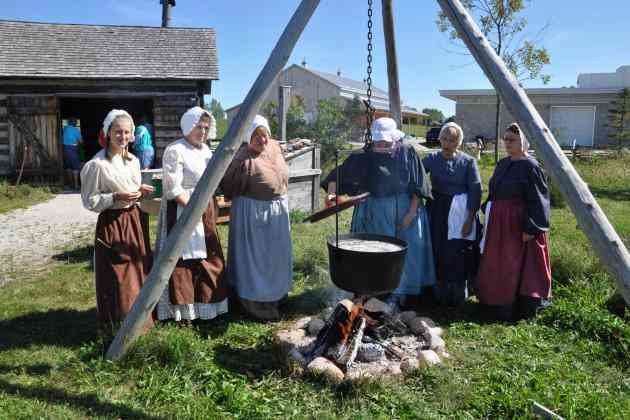A Home Child in Grey County
Home Children were placed on farms here in Grey County. Bruce Shepperd a resident of Meaford, and his cousin Bruce Shepperd of London, shared information about their parents who were part of the Home Children migration movement; Arthur and Nellie Shepperd. Arthur John Shepperd was born on April 21st, 1899, in Portsmouth England; he was one of fourteen children. When his father died in 1905, his mother continued to run the small family shoe repair business, but working and caring for all of her children became too much. She decided it would be best if her three youngest children lived elsewhere. She placed Arthur, along with his two older sisters Emma and Nellie, in a Barnardo children’s home. She did not know that her children would be sent to Canada. These three young children along with thousands of others faced the trauma of being separated from their families and taken to a new country to work.
Children were sent on their voyage across the ocean with a trunk. This trunk was packed with a winter coat, boots, shoes, a cap or a hat, a jacket or sweater, underwear and toiletries. Boys were given a suit, some shirts, 2 ties, and a few pairs of work trousers or overalls. Girls were given 6 to 8 dresses, 6 aprons, petticoats for summer and winter, and stockings. Both were also given a Bible, a hymn book, and John Bunyan’s, The Pilgrim’s Progress, and instructions on how children should behave in their placements, and stationary so they could keep in contact with the home as well as a few trinkets or keepsakes the child may have.
Arthur came to Canada after his two sisters in 1908. He sailed on the SS Dominion and arrived in Quebec along the St. Lawrence River. He was taken to a Barnardo boys’ home near Orillia and then placed on a farm in Novar. There the personal narrative and the ‘official’ story began to deviate. In a Barnardo document about Arthur’s first farm placement he is described as “active and willing and doing fairly well.” But Arthur’s version is that he was mistreated and after reporting the abuse to his inspector was moved to a farm in Sprucedale. Later in his life, Arthur lived in Meaford. On his third farm placement Arthur was treated very well and stayed in touch with the owner for many years after he left them. His two sisters worked as mothers’ helpers; Emma in Peterborough and Vineland and Nellie in Lang, Ontario. All three were able to find information about their family in England. Nellie corresponded quite frequently with her sisters back home for many years.
Many of Canada’s Home Children spent their lives searching for their parents and siblings with little success. It is estimated that one in every ten Canadians has a British Home Child somewhere on his or her family tree. Over four million Canadians are today searching for twenty million unknown British relatives. Some searches are being hampered by the unwillingness of the original immigrant organizations to release the information they have. Although the Barnardo organization’s aims were sound: to give marginalized British Children a new start in the colonies, the reality of the new world they provided was often harsher than they promised.








